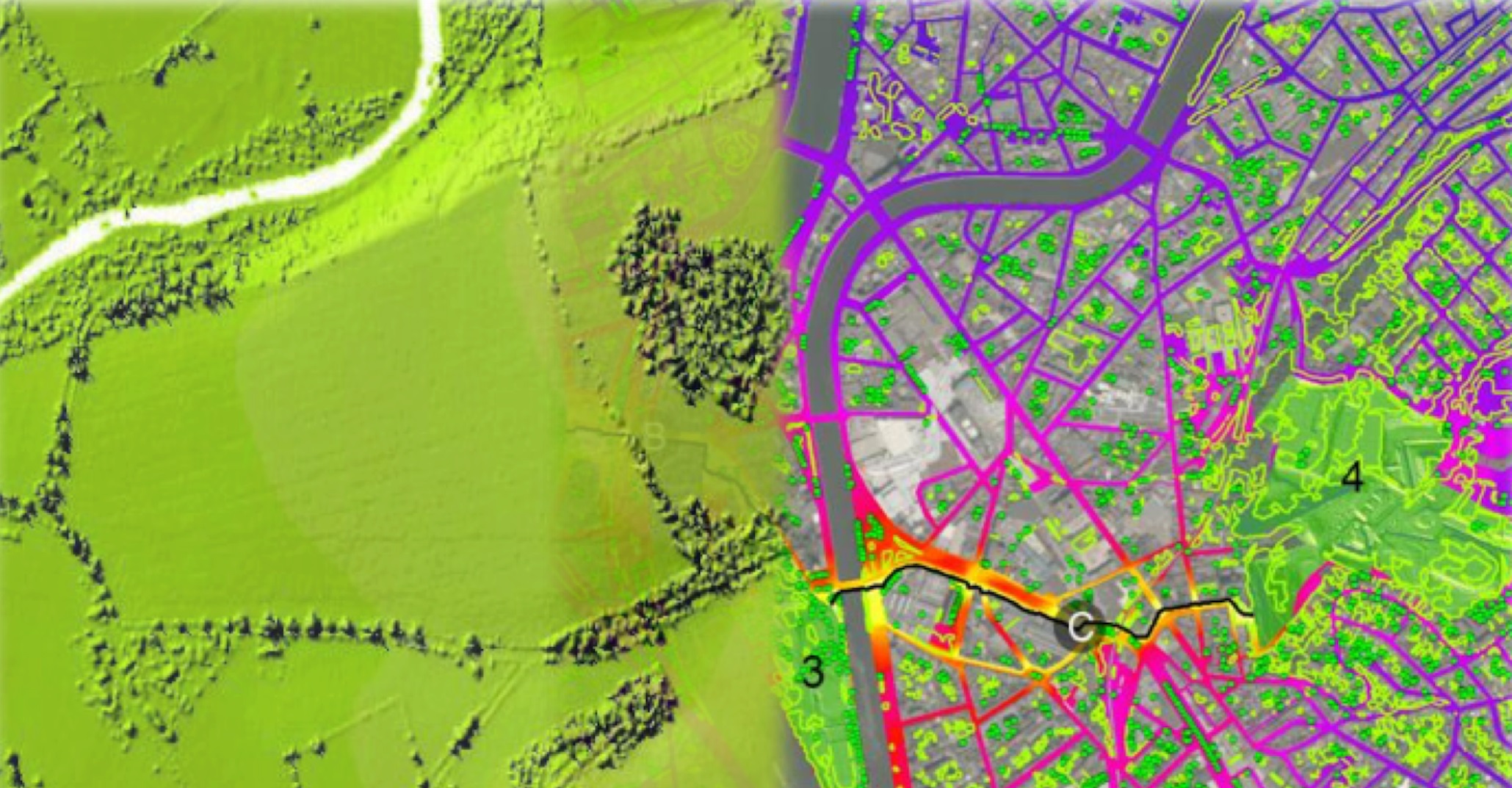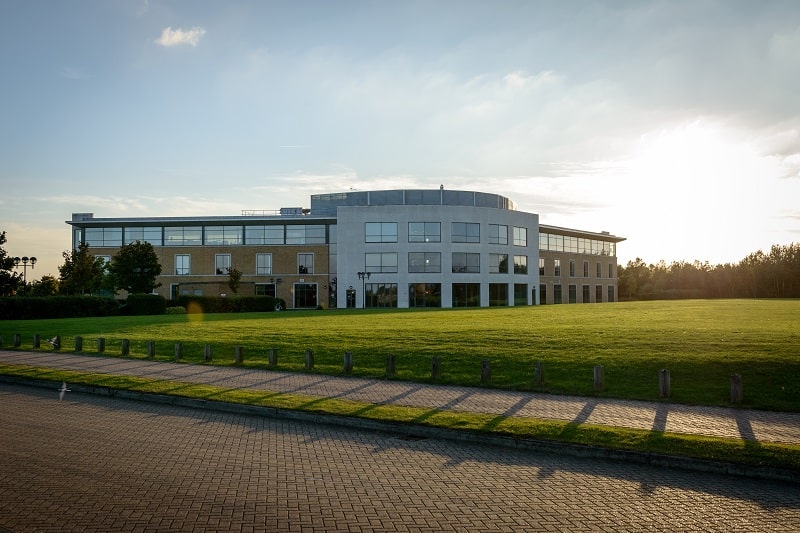A sit down with Professor Ron Corstanje
18/11/2020

Can you tell us more about your area of research and the research centre you are head of…
I am the Head of the Centre for Environmental and Agriculture Informatics. I am also a professor in Environmental Data Science and one of the NERC digital champion for constructing a digital environment. They are really titles of describing the same thing, just with a different focus! One faces government, another faces the University and the other one faces my research group. Through the digital environment, we are able to gather from the environment an incredible amount of information, through distributed networks of sensors. Through remote sensing and satellite earth observation, we can pretty much observe every square meter of the planet!
The questions my centre is interested in are, for instance, how can the digital environment help us better understand what the environment is doing? How is the environment responding? How can we better meet challenges around the warming planet? How can we engineer things such as ecological resilience and sustainability? Using informatics tools and data systems, can we better understand how the natural environment is behaving and responding? Can we devise and develop the management tools that allow us to manage the natural environment better, so that it benefits all of us.
There are outcomes around sustainability, resilience and understanding of the environment. There is a set of tools, techniques and systems that we’re developing, that range from sensing the environment networks, distributed networks of sensors integrating remote sensing, sensing, etc into an informatics system that can be turned into information. Sensors gather information about the environment, models use this data to describe the environment, but then the information has to be made useful for the end users and that’s where you have decision scientists, data social scientists.
My own private research area is very much around data science, so that is taking all this data that is coming in from all these different sensors and sources and turning all that into information. What I am personally very interested in is this concept of uncertainty, because we make decisions with uncertainty. We can monitor the environment, we don’t know everything, everywhere. Everything is still uncertain to a degree. The projections in the future are uncertain. So how can we make decisions with uncertainty, how do we manage? How do we express that uncertainty?
The work that we do has a number of practical outputs. The first one being of course, the classic one… flood defence! If you know the state of the rivers further upstream can you predict that you’re going to get flooding downstream. How do you do this? Then, how do you make these predictions available to the population? This would be a classic example of distributing sensors upstream of rainfall and water levels, incorporating that in some sort of a model that then predicts the likelihood of there being flooding further downstream, which is something that happens in the UK a lot!
As our climate changes, we know that extreme events are going to happen more often so the ability to look in the short term and predict there’s going to be flooding, but in the long term also predict how a particular watershed might change. The consequence of climate change is something we are busy with! This also gives you a concrete example of distributed network sensors that would be sitting in the rivers and in the various fields going to a decision support system somewhere, then someone at a certain point has to make a decision that further downstream, the town or village is at risk of flooding.
How do you bring students into your work?
Students are at the heart of the Centre, as they are at the heart of the University and everything we do one way or another involves students.
One of the unique things and one of the things that I really like about Cranfield is how close we are to practice in real life, in our teaching and in our research. It is very common for our students to be exposed to the latest projects, latest outcomes and we build both into our group projects and thesis projects. Also the examples we bring in to our taught modules come from our experience in doing this research and usually provide lively debate!
A common quote from my PhD major advisor was “if you present your science in the classroom, you have to be very honest. Because it is the only place where you get the true test of the worth and the validity of your science, is when you discuss it with your students.”
And he’s right!
At Cranfield, our lectures tend to be more around debates, with discussion points so it’s very common that you will put a particular case example forward and very quickly within the room between all the students you’ll have quite a lively debate. It will be tested and you will be asked to explain why this happened and why that’s relevant. It is a wonderful way to make your science relevant and to also learn from others as to how they see your science.
What do you love most about your role? / What excites you most about what you are currently doing?
The thing I really like about my role is enabling and watching people grow and getting the best out of people. Now that sounds very corny!!
The centre has about 20 academics another 30 PhD students and then usually we have about 30 MSc students. Bringing them all together and seeing how they work together to move science forward is very exciting and something I like a lot! The centre is incredibly multidisciplinary – we have economists, we have social scientists, we have risk analysts, we have statisticians and modellers like myself, we have people that are completely into informatics and data structure systems. Then we have the technicians that spends hours worrying about whether sensor will work or not and how it works, working away with soldering guns!
We have this incredible array of people from incredibly different disciplines and seeing that all coming together and addressing a real world problem from ‘how am I going to make this particular physical sensor of work?’ to ‘how is the sensor going to live in someone’s backyard?’ and ‘what do we need to socially think about?’ and ‘what are the consequences of that kind of science?’ It is incredible to see it come together – that’s one of the things I really like about my role is seeing that all happen.
What do you think is the biggest challenge in your role?
The biggest challenge is in effect the incredible wealth of challenges and opportunities that we have. This is a very fast-growing field, if you look across board, across government, AI, big data, the idea of using data technology to address environmental issues is very big at the moment. It is being able to understand and function in such a way that we can rise to all these challenges without spreading ourselves too thin.
Can you highlight a unique experience you have had while working at Cranfield?
The most unique experience that would only happen at Cranfield was when I was sitting in the board room that overlooks the airfield at Cranfield. I was discussing a potential project with an industrial partner and while we sat down this lady suddenly rushed in and said “we have visitors!!” and the CEO of Boeing walks in.
I shook the hand of the CEO of Boeing because he happened to be visiting! I then spent the next 30 minutes explaining how Boeing was relevant to environmental science! That would only happen at Cranfield!!

What are you most proud of?
I am most proud of two things really. I am very proud of my students – again you’ll hear that answer from others but it is true. The ones that have graduated and having seen what they’ve gone on to and achieved in their lives.
The next is something more personal and that has to do with my publication record and the ability to transform science whether it is applied science with an industrial partner or fundamental science funded by the UK or EU into the written word which can be understood by everybody. My publications and the publication list I have is a legacy of achievement for which I am very proud of.
Do you often work collaboratively with other areas of the University?
Along the arch from sensors to decision making we work very closely with the School of Aerospace, Transport and Manufacturing, particularly around drone technology. We have a portion in the Centre around aviation and the environment and we’re thinking very hard as to what aviation would look like moving forward and how green aviation would function and of course working on this concept of aviation and the environment.
Then on the other extreme, we are continuously thinking about decision-making and how to influence policy and incorporate concepts. We work very closely with the School of Management around a sustainability agenda, corporate sustainability agenda.
Categories & Tags:
Leave a comment on this post:
You might also like…
Automotive Engineering: From student to hypercar innovation at Rimac
We sat down with recent graduate Thomas Perrin, to discuss how his year on the MSc in Automotive Engineering at Cranfield University propelled him from the lecture hall directly into the ...
What this year at Cranfield really meant to me
Every Cranfield journey is unique. In this alumni reflection, Zachea Scicluna shares what her year at Cranfield truly meant, from facing uncertainty to gaining hands-on experience in industry-backed projects. I’ve been reflecting (and delaying) ...
Preparing for assignments and exams?
Sorry! We know it seems a bit mean to mention the exams in January rather than looking forward to the break before it! However, we know many of you will be thinking about your forthcoming ...
Screening for FTSE 100 companies on Bloomberg
So you’re researching an index and need some data on its constituent companies? Bloomberg’s Equity Screening tool makes light work of this, not just for the FTSE, but for indices, exchanges and sectors worldwide. Type EQS ...
Accelerating my future: How Cranfield put me on the fast track to automotive safety innovation
Hello! I’m Michaela Kaiser, and I’m thrilled to share my journey studying abroad. I’m from Calgary, Canada, and I recently graduated from Cranfield’s MSc Automotive Engineering course. My path to Cranfield ...
From Myanmar to Cranfield: My path to Renewable Energy
As someone who is passionate about sustainability, my career goal is to build a path in the renewable energy sector. My aspirations comes from the benefits of developing sustainable energy sources and ensuring energy ...






